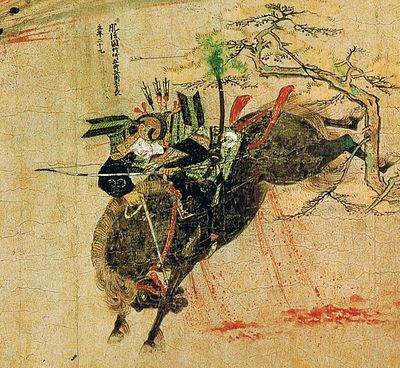The Yuan invasion force set off from Korea on 2 November 1274. Two days later they began landing on Tsushima Island. The principal landing was made at Komoda beach near Sasuura, on the northwestern tip of the southern island. Additional landings occurred in the strait between the two islands of Tsushima, as well as at two points on the northern island. The following description of events is based on contemporary Japanese sources, notably the Sō Shi Kafu, a history of the Sō clan of Tsushima.
At Sasuura, the invasion fleet was spotted offshore, allowing the deputy governor (jitodai) Sō Sukekuni (1207–74) to organize a hasty defense. With 80 mounted samurai and their retinue, Sukekuni confronted an invasion force of what the Sō Shi Kafu describes as 8,000 warriors embarked on 900 ships. The Mongols landed at 02:00 in the morning on 5 November, and ignored the Japanese negotiation attempts, opening fire with their archers and forcing them to retreat. The fight was engaged by 04:00. The small garrison force was quickly defeated, but according to the Sō Shi Kafu, one samurai, Sukesada, cut down 25 enemy soldiers in individual combat. The invaders defeated a final Japanese cavalry charge around nightfall. After their victory at Komoda, the Yuan forces burnt down most of the buildings around Sasuura and slaughtered most of the inhabitants. They took the next few days to secure control of Tsushima.























